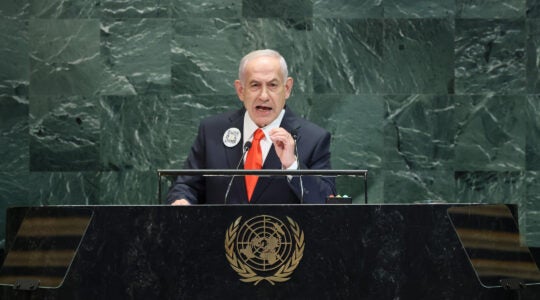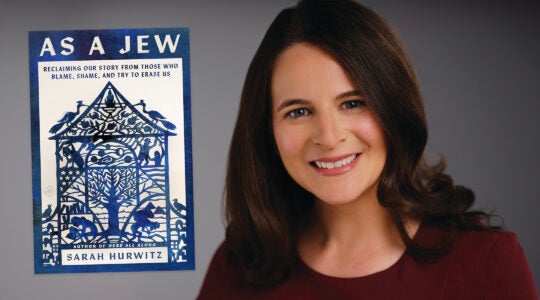Thirty years ago, Kimberlé Crenshaw coined the term intersectionality as a way to help explain the oppression of African-American women. The theory of how different forms of discrimination interact is a useful tool to recognize the way privilege and oppression overlap. It can serve to challenge notions about oppressions and hierarchies, class struggles and racial divides.
But the recent spate of anti-Semitism in New York compels us to ask if it also has its demons.
Identifying Jews as white in the context of American history is not only a perversion of the Jewish past but a denial of Jewish peoplehood. In American politics, white implies one who is a beneficiary of the past 500 years of European exploration and exploitation. It is identified with control, dominance and exclusivity — hardly accurate characteristics of Jewish history.
While in the past 50 years American Jews have enjoyed privileges associated with hierarchical whiteness, only a collective amnesia would preclude us from recalling just how recently Jews were still barred from exclusive hotels, unwelcome in select restaurants, country clubs and even neighborhoods and restricted by elite universities that had a “Jewish problem” (i.e. too many Jews), forcing them to limit Jewish registration by implementing quotas.
It is nearly impossible to imagine that any other group who had one out of every three of its members wiped out in a six-year span would be considered privileged. This narrative, however, is facilitated by the absorption of Jewishness into whiteness, which is both an erasure of Jewish ethnicity and a misrepresentation of the dynamic Jewish identity.
Jewishness as whiteness obscures the unique and often oppressed experiences of Jews, including those of Sephardic, Arab, African or Middle Eastern descent. It also accentuates and accelerates anti-Semitic tropes based on Jewish power.
The subsuming of Jewishness into whiteness was displayed recently by Linda Sarsour, who was filmed recently saying that Israel was “built on the idea that Jews are supreme to everyone else” and implied that one cannot be against white supremacy unless he or she is against the Jewish state.
Although Sarsour tried walking back her word choice, the linking of white supremacism to Israel — a country that is distinctively Jewish — was intentional. White supremacism is an acceptable identifier — even if it obfuscates the Jewish experience and demographic reality — whereas Jewish supremacism sounds reactionary and bigoted.
The discourse associating Jews with power based on their perceived whiteness is particularly threatening given the centrality of the myth of Jewish hegemonic pursuit to the repertoire of historic anti-Semitism.
As law Professor David Schraub notes: “The Whiteness of the Jewish figure served to cleanse, even validate, arguments that otherwise would reek in their anti-Semitic familiarity.”
In fact, a perceived all-encompassing Jewish power, or cabal, is one of the few tropes that unites extremists on the right and left. In November, white supremacist Patrick Little of Idaho declared his candidacy for the general election, running as a Republican. He told the Idaho Press that “the only way to challenge Jewish power in this country is with local elections.” He also said that the “top priority” for the Jewish people is to displace white people specifically, adding that the Jews control the media, entertainment industry and politics.
Along these same lines on the left, British Parliament member Angela Ormerod of the Labour Party was suspended in 2018 after tweeting that “Jews control the media.”
From ancient through medieval times, the fear of a secret Jewish conspiracy to dominate both the economy and government was used to justify anti-Semitic violence. Later, the Nazis capitalized on old Christian themes of secret Jewish dominance to propagandize and mobilize support for their Jewish liquidation program. Today, that fear has been expanded by modern anti-Semites to the point of caricature to include the media, global markets and geopolitical stability.
Framed according to this trope, a paradox develops: Not only is the Jewish experience lost in whiteness, but Jewishness serves to epitomize whiteness’ vilest iteration. A white Jew is not only powerful but hyper-powerful. He is not only exploitative and manipulative but the arch puppeteer, controlling world affairs.
While intersectionality can be a valuable tool, it has been ineffective in the case of “white Jews.” The result is a dangerous distortion of the Jewish experience — its history, diversity and challenges.
Although Jewish skin comes in every shade — reflecting the diversity of a people that spans the globe and is all at once an ethnicity, nation and religion — some of its whitest members endured a genocidal program that prompted the world to proclaim “Never Again.”
An intersectional approach can prove useful only if the two identities are separated and the Jewish experience is articulated rather than subsumed or dismissed. Fighting anti-Semitism will begin when the complexity of Jewish experience is properly portrayed rather than lost in skin color.
Batsheva Neuer teaches Jewish thought at Touro College and is pursuing a doctorate in New York City. Her articles appear in The Wall Street Journal and Washington Post. This article was dostributed by JTA
The New York Jewish Week brings you the stories behind the headlines, keeping you connected to Jewish life in New York. Help sustain the reporting you trust by donating today.





